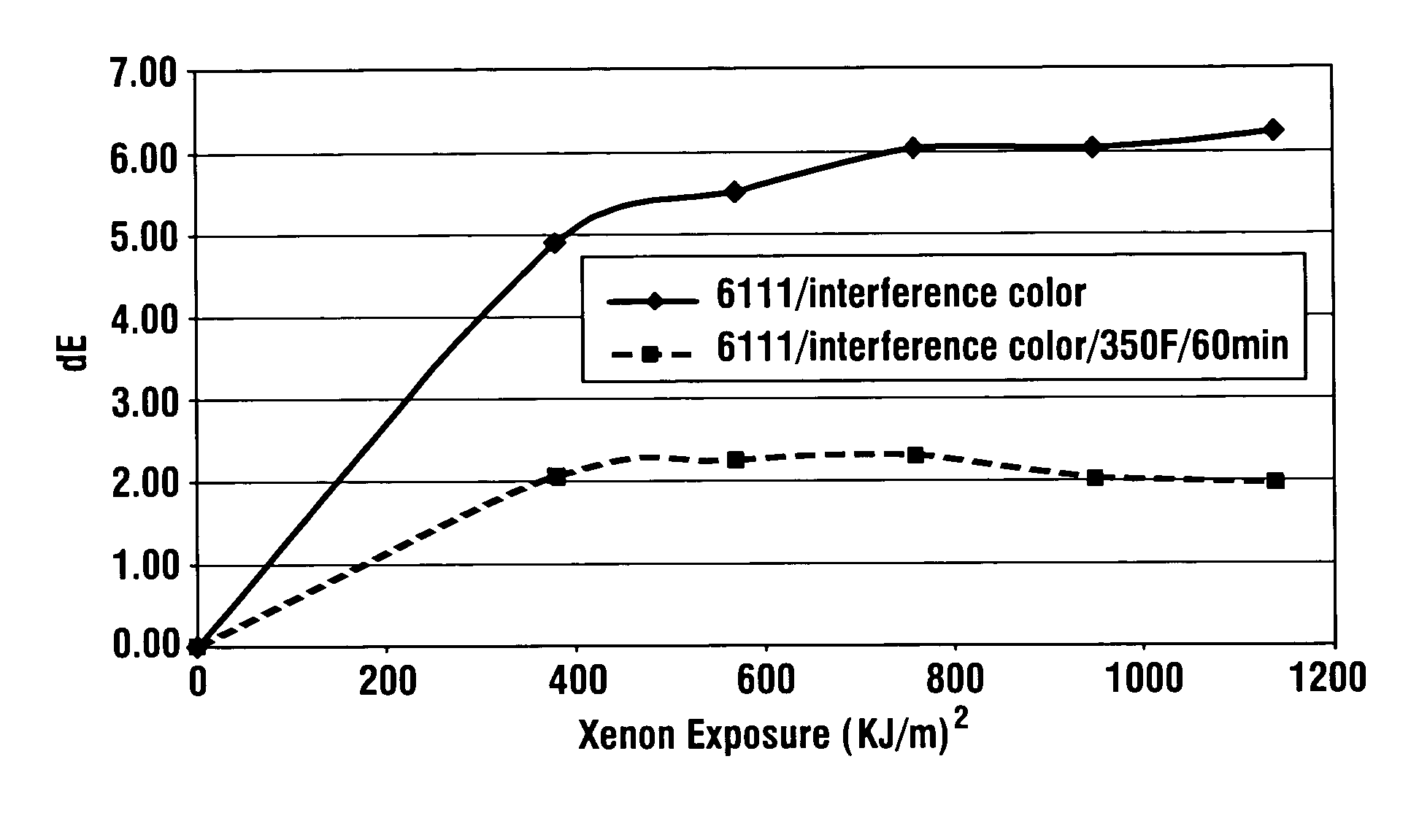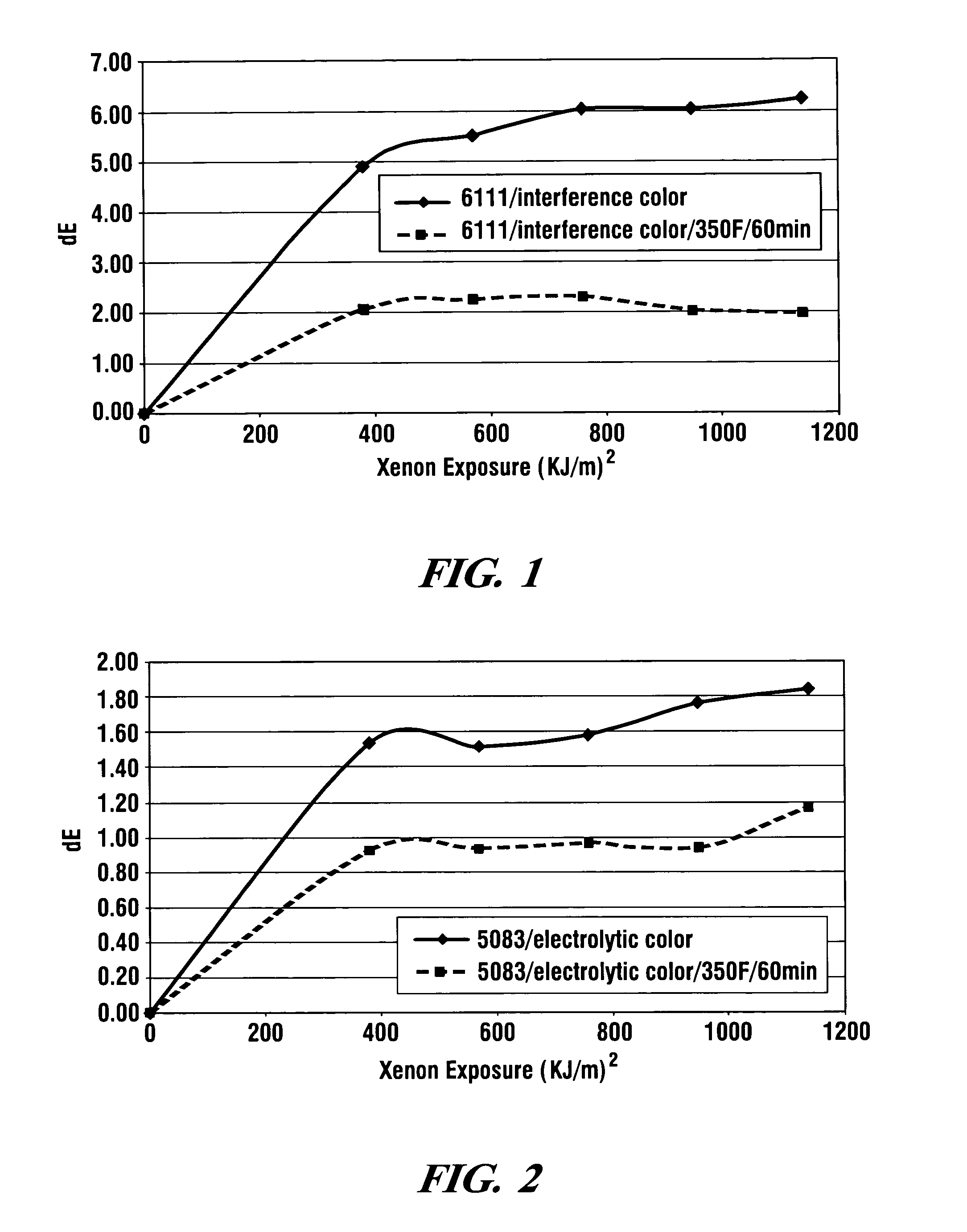Color stabilization of anodized aluminum alloys
a technology of anodized aluminum alloy and color stabilization, applied in vacuum evaporation coating, coating, sputtering coating, etc., can solve problems such as significant loss or color intensity change, and achieve the effect of avoiding or reducing the abrupt initial color chang
- Summary
- Abstract
- Description
- Claims
- Application Information
AI Technical Summary
Benefits of technology
Problems solved by technology
Method used
Image
Examples
Embodiment Construction
[0014]The practice of the invention will be illustrated by anodizing and coloring certain aluminum alloys for processing in accordance with this invention. Alloys were selected from those used in the formation of external body panels or trim for automotive vehicles. However, the practice of the invention is not limited to these alloys but it is generally applicable to colored anodized aluminum alloys.
[0015]Two of the exemplary alloys are AA5083 and AA5657. The third example is AA6111. The AA5XXX alloys are a series of aluminum base alloys that contain magnesium. The 5083 alloy is used in cold rolled sheet metal form for high elongation stretch forming of automotive body panels such as deck lids and door panels. This is an aluminum alloy that contains about 4% magnesium along with some manganese. Aluminum alloy 5657 is an alloy with less magnesium that has been used for bright trim pieces on automotive vehicles, but can also be used for making body panels. Aluminum alloy 6111 is an a...
PUM
| Property | Measurement | Unit |
|---|---|---|
| temperature | aaaaa | aaaaa |
| thickness | aaaaa | aaaaa |
| temperature | aaaaa | aaaaa |
Abstract
Description
Claims
Application Information
 Login to View More
Login to View More - R&D
- Intellectual Property
- Life Sciences
- Materials
- Tech Scout
- Unparalleled Data Quality
- Higher Quality Content
- 60% Fewer Hallucinations
Browse by: Latest US Patents, China's latest patents, Technical Efficacy Thesaurus, Application Domain, Technology Topic, Popular Technical Reports.
© 2025 PatSnap. All rights reserved.Legal|Privacy policy|Modern Slavery Act Transparency Statement|Sitemap|About US| Contact US: help@patsnap.com



